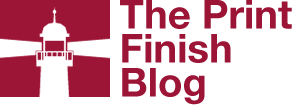 UV curable screen printing is still a relatively new technology and some print and sign shop owners are just starting to investigate what we think will be the future of large-scale printing. To answer many of the questions we’ve received here at Lloyds of Indiana, here’s a short list of common answers on UV printing.
UV curable screen printing is still a relatively new technology and some print and sign shop owners are just starting to investigate what we think will be the future of large-scale printing. To answer many of the questions we’ve received here at Lloyds of Indiana, here’s a short list of common answers on UV printing.
UV curable ink is not solvent-based, so no VOCs.
UV curable screen printing is a solid system, meaning there are no solvents involved in the process. Instead, a strong ultraviolet (UV) light source interacts with the ink ingredients in what is called a “UV cure reactor” to create the printed image.
The lack of solvents means there are no volatile organic compounds (VOCs), making curable inks more environmentally-friendly than traditional solvent-based printing methods. This means you spend less time and money dealing with the safety requirements and equipment to handle solvents. That means higher profit margins, fewer risks and accidents, and more time spent on growing your business, not cleaning up.
UV cure reactors run very quickly.
UV cure reactors can mass-produce print jobs very quickly thanks to their rapid curing speeds. Essentially, the ink reaction process takes between 1 and 3 seconds and doesn’t require a lengthy drying time.
The best part is that colors can be printed in succession without having to stop for dry time – a major labor and time savings for a screen and print shop. Instead of keeping a constant eye on your job, you can be working on other print jobs and helping your clients.
UV ink won’t clog the screen.
Because UV ink won’t dry in the screen, it won’t clog the mesh. That means less time spent changing or cleaning the screen throughout a print job.
UV ink has great color value and range.
If you’re doing a lot of four-color process graphic printing, UV curable ink is the way to go. The inks range in opacity from transparent to translucent, giving you an incredible color gamut and range. This, combined with the fact that the ink won’t dry in the screen, means you can do UV ink printing through screens with incredibly high mesh counts, often as high as 420 threads per inch.
UV printing greatly reduces sign printing costs.
Most sign printers who use thermal methods or stick-on vinyl to make vinyl banners can’t do double-sided signs. The only way to print a double-sided sign is to print two pieces of vinyl, and then sew them back-to-back. With UV printing, it’s possible to print one side of a sign, flip it over, and run it through again. Material costs are cut in half, labor costs are reduced, and you’re left with a beautiful full-color sign that’s resistant to outdoor elements.
UV ink does have its drawbacks.
Solvents tend to be more flexible (you can print on more substrates) and more durable when exposed to the elements (although UV is more durable than vinyl). But, if you’re doing predominantly sign, poster and banner printing, you’ll find that UV curable printing is the best way to go for graphic screen printing. It’s cleaner, safer, cheaper and faster.
Photo: evoo73

UV printing is also more resistant to scratches, wear and tear, and sun exposure than its traditional printing counterparts. Customers love that a large promotional piece isn’t going to become tired and sun-worn after a few weeks.
You made some good points there. I did a search on the topic and found most people will agree with your blog.
The points which you had mentioned in this above given post is quite impressive and interesting. I am sure, everyone will like it.